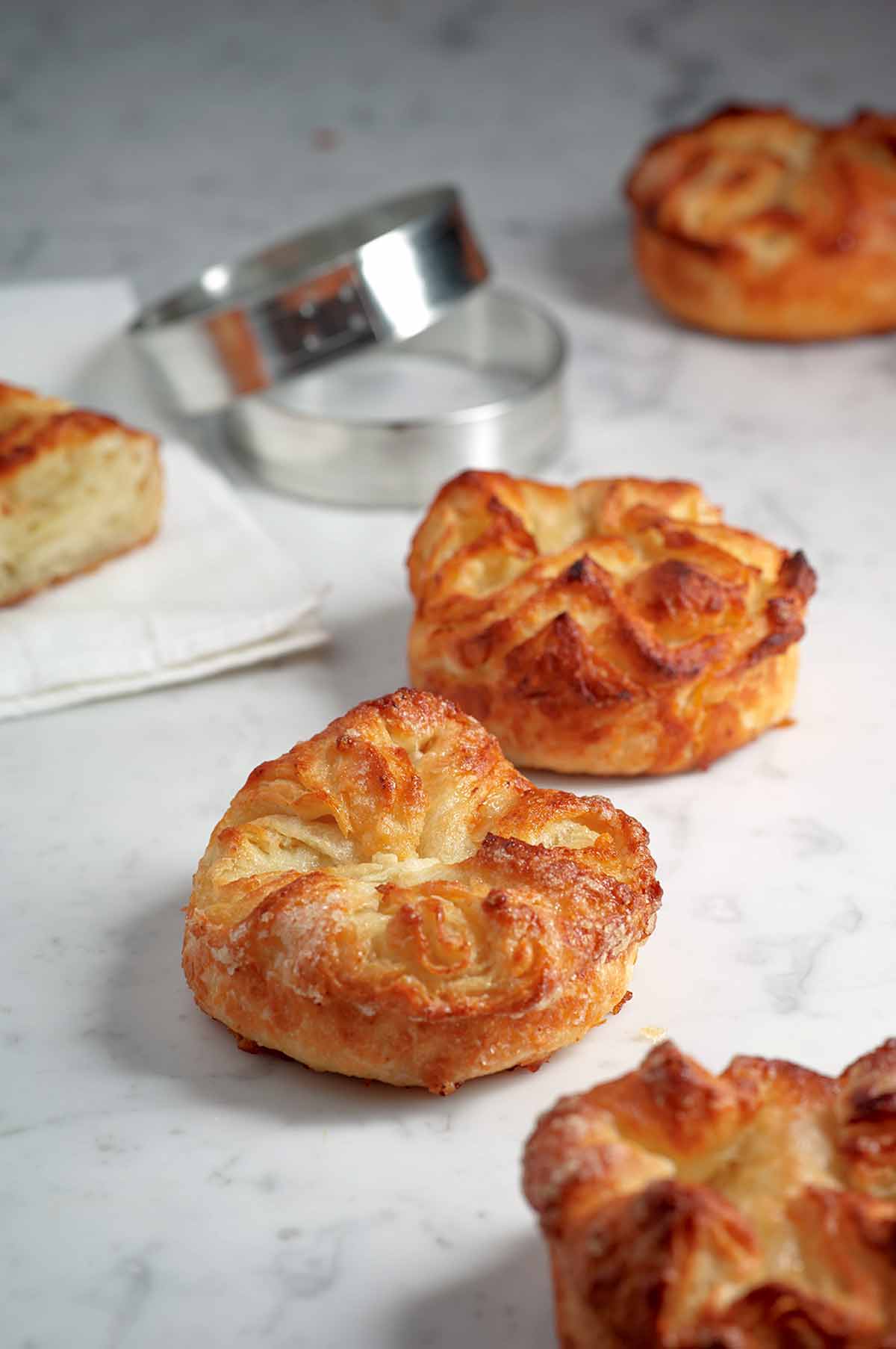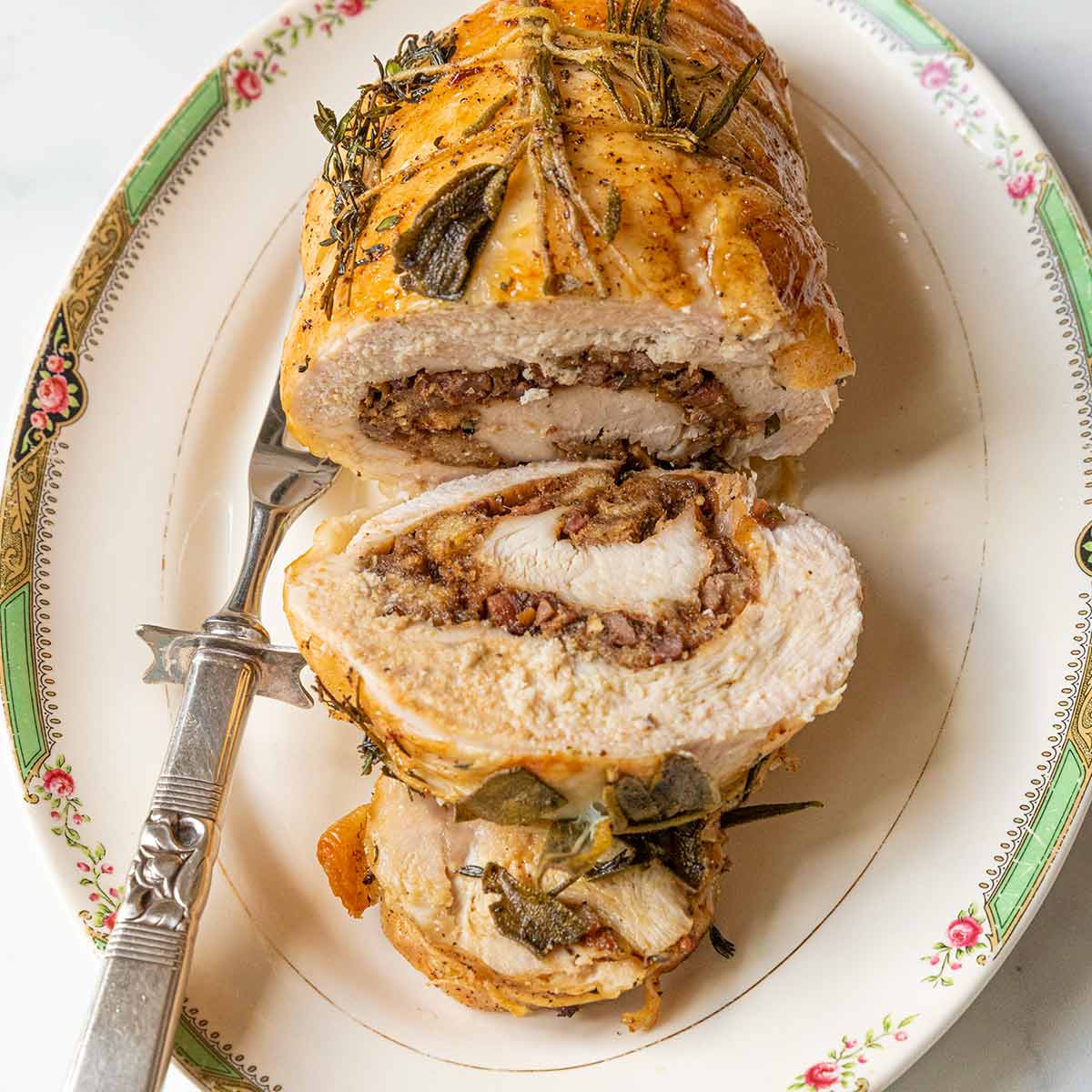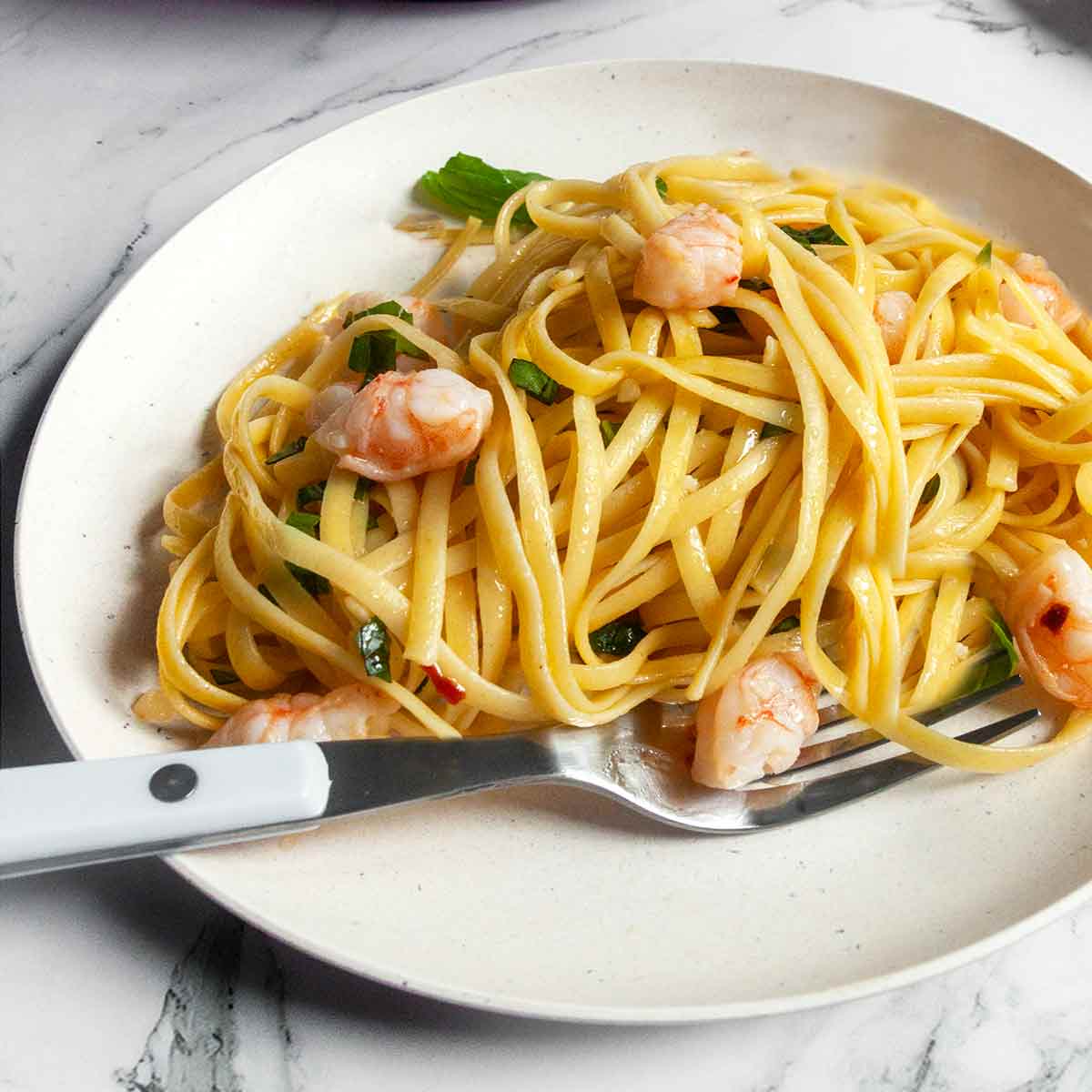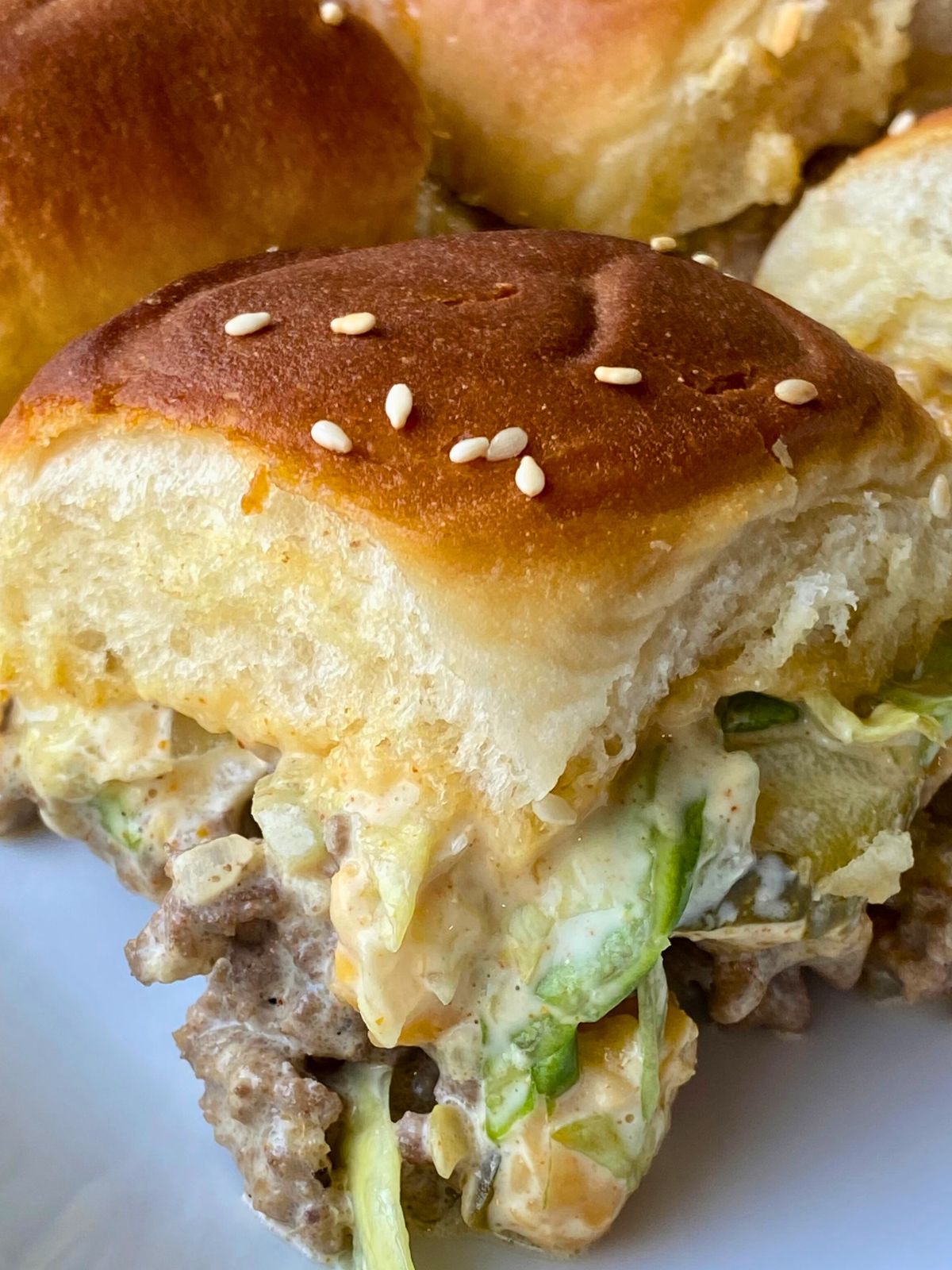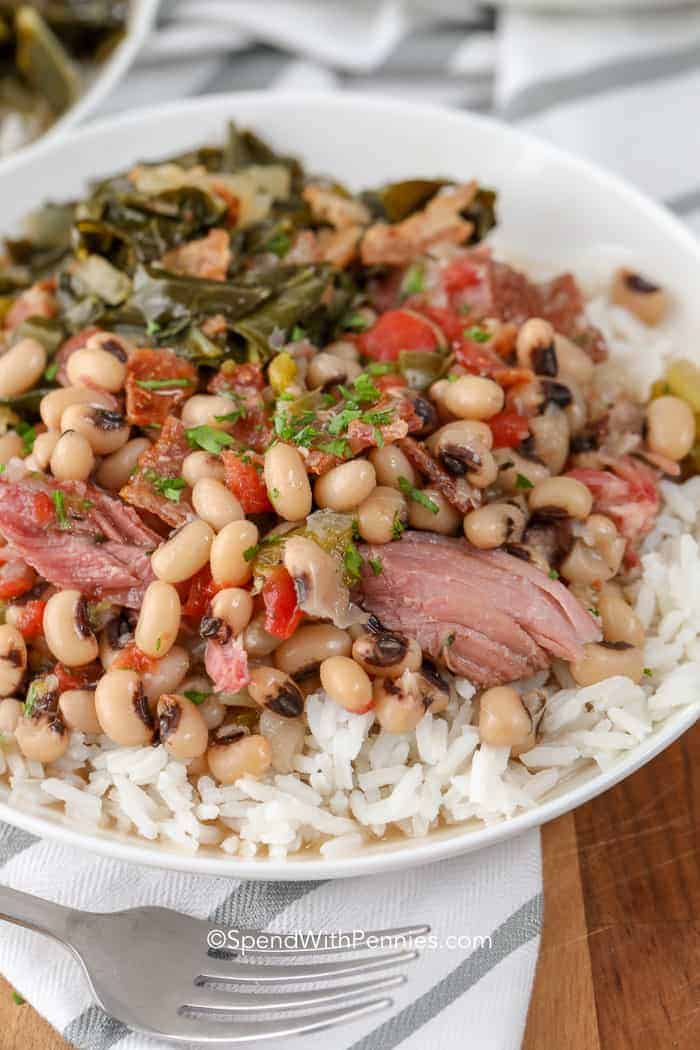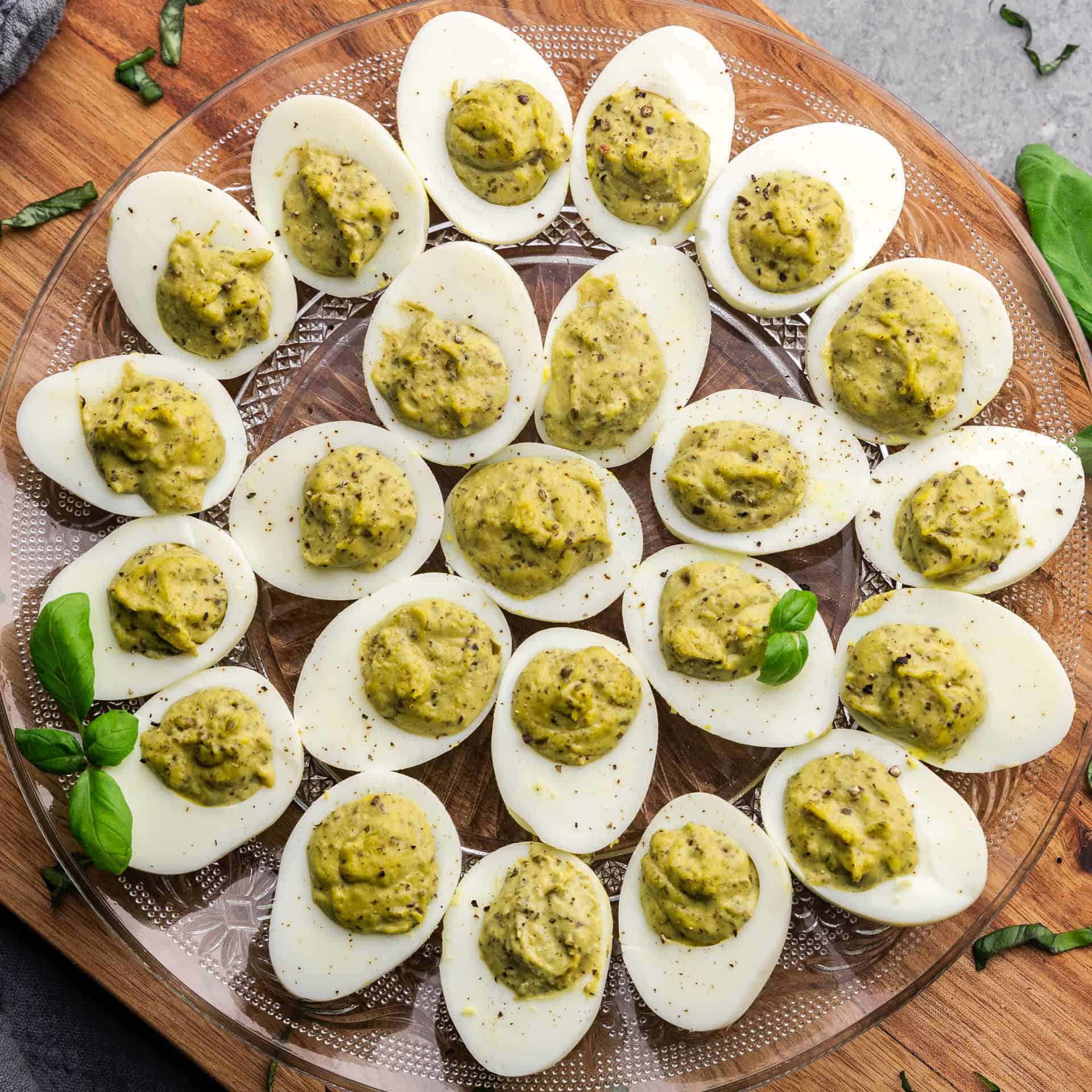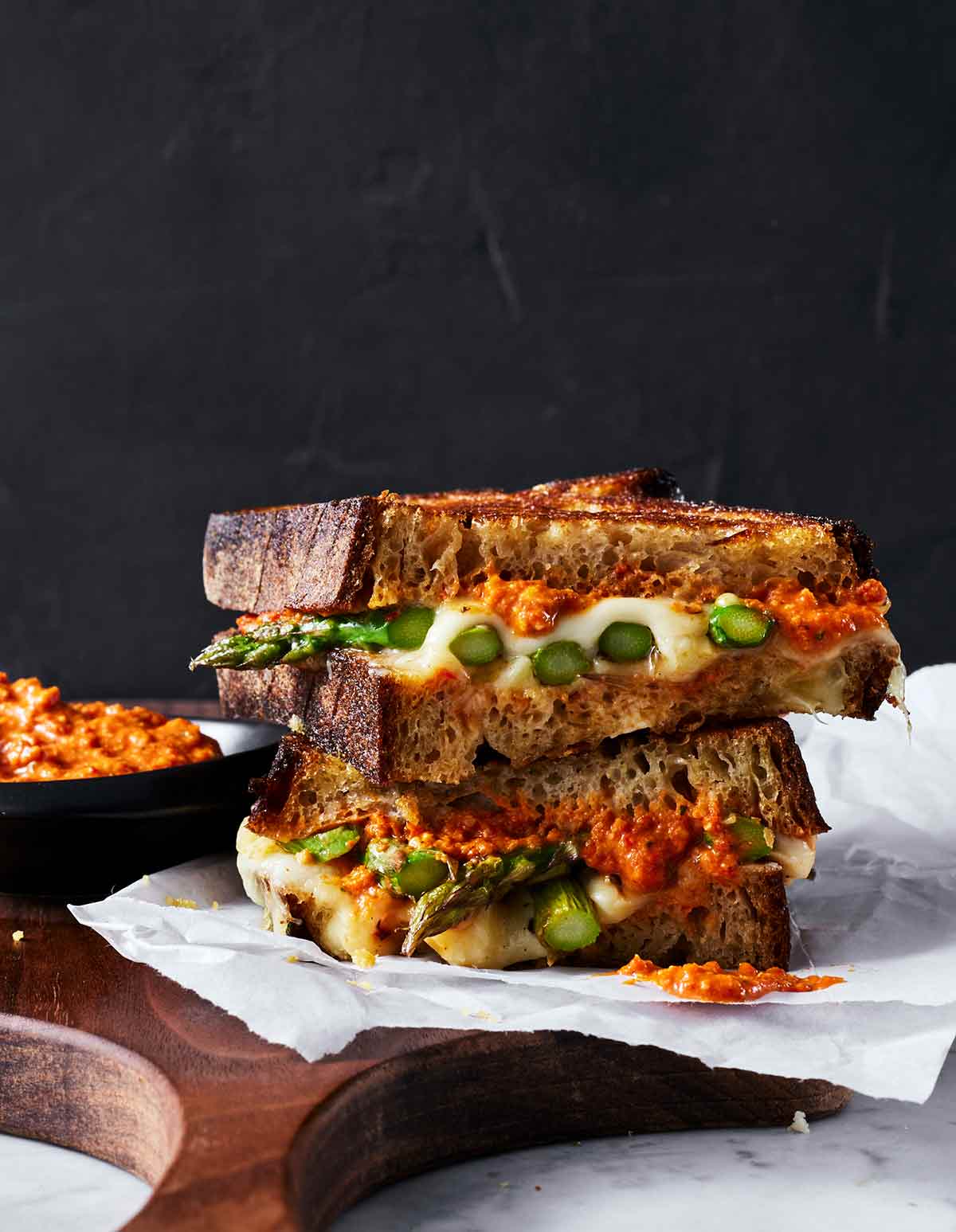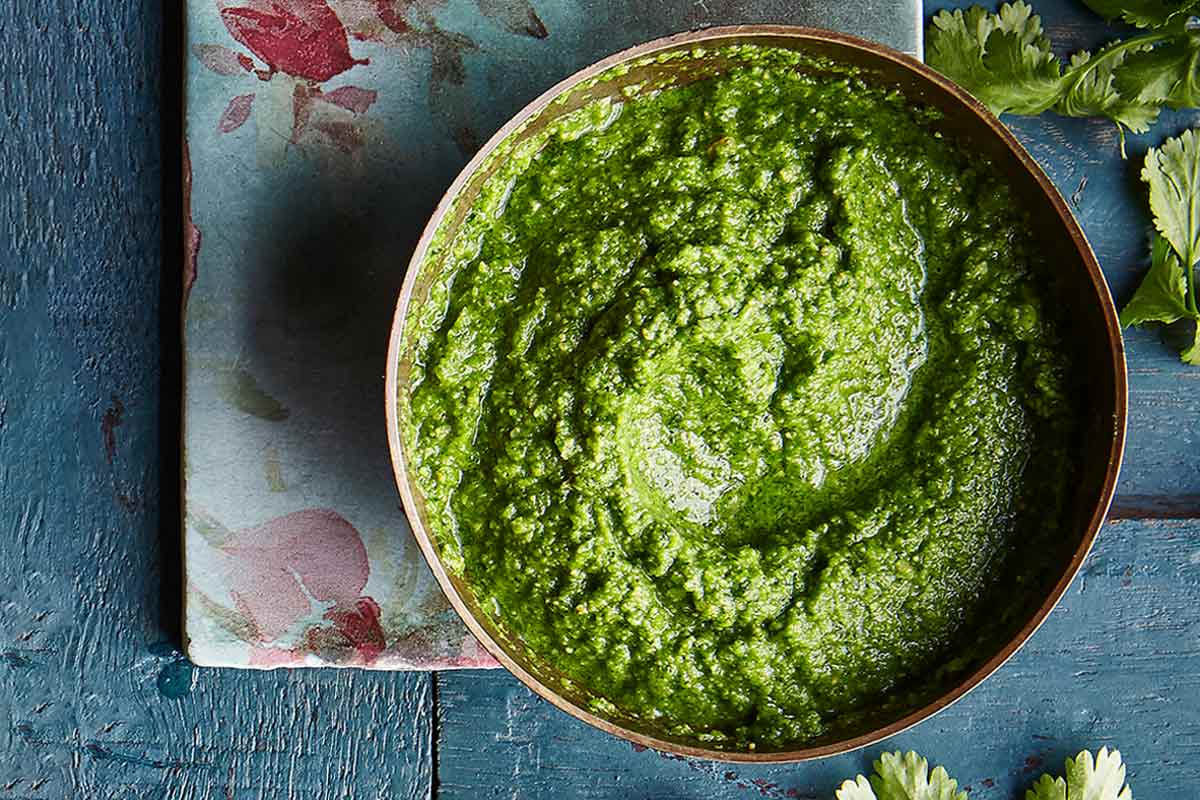Kouign Amann
By Leite's CulinariaIngredients
3 cups minus 1 1/2 tablespoons bread flour (lightly spooned and leveled off)
2 teaspoons instant yeast
1 3/4 teaspoons fine sea salt
1 cup water (cool room temperature)
2 tablespoons (1 oz) unsalted butter (melted and cooled)
2 sticks (8 oz) unsalted butter (preferably high butterfat, 60° to 70°F (16° to 21°C), plus more for the rings)
1 cup granulated sugar (preferably superfine (or just blitz granulated sugar in a blender until finely ground but not powdery))
- Prep Time60mins
- Cook Time300mins
- Servings8
Instructions
Make the dough
In the bowl of a stand mixer fitted with a hand whisk, mix together the flour, yeast, and then the salt. Add the water and the melted butter. TESTER TIP: Because sugar increases browning, the milk and egg used in Danish dough are replaced with water here in order to prevent excessive browning or burning.
Attach the dough hook and, starting on low speed, mix until the flour mixture is moistened, scraping down the sides of the bowl as necessary. Continuing on low speed, beat for 4 minutes. The dough will be silky smooth and have cleaned the sides of the bowl, but it will stick to the bottom and be very soft and slightly sticky to the touch.
Cover the bowl and let it rest at room temperature for 30 minutes.
Make the butter square
Meanwhile, prepare the butter square. Place the softened butter on a large sheet of plastic wrap and wrap it loosely. If the butter is cold, pound it lightly with a rolling pin to flatten and soften it. Then knead it together using the plastic wrap and your knuckles to avoid touching the butter directly. Shape the butter into a 5-inch square (it will be about 3/4 inch high). At this point, the butter should be firm but workable68° to 70°F (20° to 21°C). Use it at once or set it in a cool area. TESTER TIP: Maintaining the correct temperature of the butter is critical. The butter should be the same consistency as the dough before they're rolled together or it will break through the dough and not distribute evenly.
Make the dough package
Roll out the dough on a well-floured surface to an 8-inch square.
Place the plastic-wrapped butter square diagonally in the center of the dough square and lightly mark the dough at the edges of the butter with the dull side of a clean ruler or a knife. Remove the butter and roll each marked corner of the dough into a flap. The dough will be slightly elastic.
Unwrap and place the butter on the dough. Wrap the butter by stretching the flaps slightly to reach across the butter square. Brush off any flour on the first three flaps before stretching over the fourth flap to wrap the butter square securely. It will form a 5 3/4-inch square dough package. Pinch together the seams to seal it well.
Make the first turn
On the well-floured surface, keeping the dough seam side up and lightly floured, gently roll the dough package into a 13-by-7-inch rectangle. It will be about 1/4-inch thick. Roll into the corners and use a bench scraper or a ruler to maintain an even rectangle. If the dough blisters, gently press the blister down. If the butter breaks through, dust the area lightly with a little flour before brushing off all excess flour from the surface of the dough.
Fold the dough into thirds as you would fold a business letter. This is the first turn. Wrap the dough package with plastic wrap and refrigerate it for 1 hour. The dough should weigh about 2 pounds (900 grams).
Make the second turn
Before each turn, move the dough so the closed end is facing to the left. Repeat the same process of rolling and folding as for the first turn, but every once in a while, flip over the dough to keep the seams aligned. (The upper part tends to roll more than the bottom.) Cover the dough with plastic wrap and refrigerate for another hour.
Make the third turn
Clean the work surface and sprinkle with about 1/2 the sugar in a rectangle the width of the dough. Set the dough on top and sprinkle most of the remaining sugar on top of it.
Roll the dough again into a 14-by-8-inch rectangle, flipping it over from time to time. Scrape sugar from the work surface and sprinkle it and some of the remaining sugar on top of the dough until all but 2 to 3 tablespoons of the sugar have been rolled into the dough. With a bench scraper, form the dough into an even rectangle.
Fold the dough into thirds, wrap it with plastic wrap, and freeze it for 30 minutes. Then move it to the refrigerator and leave it there for 30 minutes.
Prepare the rings and pan
Line a 17 1/4-by-12 1/4-by-1-inch half sheet pan with aluminum foil, dull side up. Set the pastry rings on the foil and lightly coat the insides and bottom with butter.
Roll and shape the dough
Spread the remaining sugar on the work surface in a rectangle. Set the dough on top of the sugar and roll it from the center to the edges, then as necessary to form a 16-by-8-inch rectangle. It will be about 3/8-inch thick. Cut the dough into 8 equal pieces. Each will be about a 4-inch square with an average weight of 5 ounces (140 grams). The dough will now be somewhat sticky as the sugar becomes syrupy.
Roll 1 of the squares into a 5 1/2- to 6-inch square. Bring up the 4 corners to the center and press down firmly over the top of the dough.
Cup the dough square into the palm of your hand to support it and keep the 4 corners together. Repeat folding, bringing up the corners to the center a second time. This will be more difficult because the dough is now thicker, but simply press it down in the center (if necessary, dip your fingertip in sugar) and push it together as well as possible.
Place the dough in a prepared pastry ring on the sheet pan. Repeat with the other dough squares. Each one will open up slightly and take its own shape, which is part of the charm.
Let the dough rise
Cover the shaped dough with an 18-by-12-by-2-inch sheet pan, or loosely with plastic wrap that has been lightly coated with butter, and let it sit in a warm place ideally at 75° to 80°F (24° to 27°C), but no higher than 80°F (27°C) for 30 to 50 minutes, or until the dough has risen about 1 1/2 times and most of the dough touches the sides of the rings. TESTER TIP: Once the dough is shaped, the baking time can be delayed for up to 2 hours by lightly covering the kouigns with plastic wrap and refrigerating them. The rising time, once the kouigns are removed from the refrigerator, will take about 45 minutes to an hour, but the baking time will be the same and the results comparable. Do not refrigerate the dough for more than 2 hours, as this prevents the dough from rising.
Bake the dough
At least 30 minutes (or longer) before baking, set an oven rack at the middle level. Preheat the oven to 400°F (200°C).
Bake for 12 minutes. For even baking, rotate the pan halfway around. Continue baking for 8 to 15 minutes, or until the pastries are caramelized and the edges are deeply browned and an instant-read thermometer reads a minimum of 212° to 215°F (100° to 102°C). Be certain to check the pastries often toward the end to avoid overbrowning.
Set the pan on a wire rack. Use tongs to lift off the pastry rings and a pancake turner to lift each kouign onto another wire rack that has been lightly coated with butter and set over paper towels to catch any leaking butter. (About 2 tablespoons of butter will have leaked from the kouigns onto the aluminum foil.) If any of the kouigns cannot be removed from the rings, return them to the oven for a few minutes to soften the caramel.
Let the kouigns cool for about 10 minutes. The texture is softest and the kouigns most delicious when eaten just baked and while still warm. Store any leftover kouigns in a paper bag at room temperature for 2 days. To reheat, warm it for 8 to 10 seconds in a microwave or 3 to 5 minutes in a preheated 350°F (175°C) oven.
DessertOther popular recipes
Popular categories
- Burgers & Wraps
- Dips & Toppings
- Stews & Chilis
- 4th Of July/Memorial Day
- Accompaniment
- Adult Beverages
- Air Fryer
- Appetizer
- Appetizers
- Appetizers & Snacks
- Appetizers/Snacks
- BBQ
- Beef
- Beverage
- Beverages
- Biscuit
- Bread
- Breads & Muffins
- Breakfast
- Breakfast & Brunch
- Breakfast And Brunch
- Brunch
- Cake
- Cakes
- Cakes & Cupcakes
- Candy
- Casserole
- Casseroles
- Chicken
- Chicken / Poultry
- Chicken Recipe
- Chocolates
- Cobbler
- Cocktail
- Cocktails
- Condiment
- Condiments
- Cookies
- Cookies & Bars
- Cooking Basics
- Dessert
- Desserts
- Desserts & Sweet Treats
- Dinner
- Dip
- Dips
- Dips & Spreads
- Dressing
- Dressings
- Drink
- Drinks
- Drinks & Adult Beverages
- Easy
- Entree
- Fish
- Fish Recipe
- Fried Chicken
- Frostings & Sweet Sauces
- Garnish
- Grains & Pastas
- Gravy
- Grilling
- Ham
- Holiday
- Homemade Ingredients & Condiments
- Hors D'Oeuvres
- Ingredient
- Kitchen Basics
- Lunch
- Main
- Main Course
- Main Dish
- Mains
- Mains & Entrees
- Marinade
- Meal Prep
- Meatless
- Muffin
- Muffins
- One Pan
- Pancakes & Waffles
- Pancit
- Pantry
- Party Food
- Pasta
- Pie
- Pizza
- Pork
- Pork Recipes
- Pressure Cooker Or Instant Pot
- Pulutan
- Quick Breads
- Salad
- Salad Dressing
- Salad Dressings & Toppings
- Salads
- Salsa
- Sandwich
- Sandwiches
- Sauce
- Sauces
- Sauces & Marinades
- Seafood
- Seasoning
- Seasoning Mix
- Seasonings
- Sheet Pan Dinners
- Side
- Side Dish
- Side Dishes
- Sides
- Sides & Vegetables
- Slow Cooker
- Smoothies
- Snack
- Snacks
- Soup
- Soup Recipe
- Soups
- Soups And Stews
- Spice Mix
- Spices
- Spreads
- Starter
- Stew
- Thanksgiving
- Turkey
- Tutorial
- Vegetable
